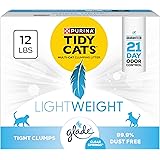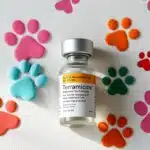About 30 to 40 percent of the world’s people have allergies, with cat allergies being more common than dog allergies. This shows we need good ways to treat cat allergies. The Ohio State University College of Veterinary Medicine says cat allergies come from a protein in their skin and saliva. This protein gets on their fur when they groom, making it key to manage allergies.
For those looking for cat allergy treatment, knowing the causes and symptoms is crucial.
Key Takeaways
- Approximately 15 to 30 percent of people with allergies have a reaction to cats or dogs.
- Cat allergies can contribute to constant allergy symptoms, as exposure may occur in various environments.
- Bathing a cat weekly can decrease allergen concentration by up to 84 percent.
- Using an air purifier with a HEPA filter can reduce allergen concentration in a room by up to five to seven-fold.
- Regular baths given to cats can help reduce airborne allergens, providing feline allergy relief.
- Cat allergy treatment options include avoidance, medication, and immunotherapy, making it essential to explore various pet dander remedies.
Understanding Cat Allergies
Cat allergies can make you sneeze, have a runny nose, itchy eyes, and skin rashes. This makes allergies to cats treatment very important. The immune system reacts too strongly to proteins in cat skin and saliva, causing these symptoms.
The main culprit is Fel d-I, a protein from cat skin and saliva. It’s very small, so it can easily get airborne. It’s found in the dust of many homes, even without cats.
It’s key to know what causes and symptoms of cat allergies are. Symptoms can start quickly or take hours to show up. They can be mild or very severe. For those with allergies, treatments like antihistamines and avoiding the allergen are options.
Cleaning regularly is vital to reduce allergens. Mopping and vacuuming with a HEPA filter vacuum help a lot. Also, HEPA filters and central air cleaners can control cat dander, making treatment easier.
The Science Behind Allergies
Allergies happen when the immune system gets confused and sees something harmless, like cat dander, as a danger. It then releases histamines to fight it. This is a big problem, with research showing that 1 in 5 adults worldwide have allergies, including cat allergies. To find the best cat allergy solutions, we need to understand how allergies work and the role of histamines in causing symptoms.
Managing cat allergies involves several key factors. The main cat allergen, Fel d 1, is responsible for up to 96% of human allergic reactions to cats. This allergen is very small, making it easy to breathe in and cause allergic reactions. By grasping the science behind allergies, we can create effective treatments and reduce exposure to allergens.
To better manage cat allergies, it’s important to know about the different types of allergens and how they affect our bodies. Here’s a table that summarizes the main cat allergens and their sensitization rates:
| Allergen | Sensitization Rate |
|---|---|
| Fel d 1 | 60%-100% |
| Fel d 2 | 14%-54% |
| Fel d 3 | 10% |
| Fel d 4 | 63% |
| Fel d 5 | 38% |
| Fel d 7 | 38% |
| Fel d 8 | 19% |
By understanding the science behind allergies and the different allergens, we can develop effective ways to manage cat allergies. This helps us find the best cat allergy solutions for those who suffer from this common issue.
Identifying Cat Allergies
It’s important to find out if your cat has allergies. There are ways to check, like at-home kits and professional tests. At-home kits can give a hint, but professional tests are more reliable.
To manage cat allergies, you need a solid plan. This includes environmental control measures and medications. Knowing how to spot allergies is key to treating them well.
At-Home Allergy Testing
At-home kits let you test your cat for allergies. They usually involve a blood or skin test. You’ll get results in a few days.
Professional Allergy Testing
Professional tests are more precise for diagnosing allergies. A vet will do a series of tests, like blood and skin tests. This helps figure out if your cat has allergies.
Understanding how to identify cat allergies is the first step to managing them. Medications can help, but always consult a vet for the right treatment.
Non-Medication Relief Options
If you have cat allergies, there are ways to feel better without medicine. One good way is to control your environment. This means getting rid of carpet and furniture that holds onto cat dander.
Using air purifiers and humidifiers can also help. Natural remedies for cat allergies like HEPA air purifiers can cut down on airborne allergens. Plus, pet dander remedies like regular grooming and baths can reduce dander and hair that causes allergies.
Environmental Control Measures
- Remove carpeting and upholstered furniture
- Use HEPA air purifiers
- Regularly groom and bathe cats
Air Purifiers and Humidifiers
Air purifiers and humidifiers can help with cat allergy symptoms. They make the air cleaner by reducing cat dander and other allergens. This can help with congestion and itchiness.
Non-medication options can be a good way to manage cat allergy symptoms. By using environmental control, air purifiers, and humidifiers, you can lower your exposure to cat dander. This can make your life better overall.
| Relief Option | Description |
|---|---|
| Environmental Control Measures | Removing carpeting and upholstered furniture, regular grooming and bathing of cats |
| Air Purifiers and Humidifiers | Reducing cat dander and other allergens in the air |
Medications for Cat Allergies
For those with cat allergies, several medications can help. Cat allergy treatment includes antihistamines. They block histamines that cause allergy symptoms. Nasal corticosteroids also help by reducing swelling in the nose, easing symptoms.
Common symptoms of cat allergies are itchy, watery eyes and sneezing. A runny nose can also occur. In severe cases, breathing problems and wheezing may happen. Feline allergy relief comes from a mix of meds and lifestyle changes. Antihistamines and decongestants are often suggested for symptoms. Immunotherapy, with regular shots, helps by gradually exposing you to allergens.
Seeing a healthcare professional is key to finding the right treatment for cat allergies. They can create a plan that might include meds, shots, or both. Understanding your options and working with a doctor can lead to relief from symptoms.
Over-the-counter options like Allegra, Claritin, and Zyrtec are popular for cat allergies. But, it’s important to use them as directed. Allegra is for those 12 and older, while Claritin and Zyrtec are for 6 and older. Talking to a doctor can help find the best feline allergy relief for you.
Immunotherapy for Cat Allergies
Immunotherapy is a good choice for those wanting to manage cat allergy symptoms long-term. It works by slowly introducing small amounts of allergens to the body. This helps the immune system get used to them over time. You can get this treatment through allergy shots or sublingual immunotherapy, both of which are effective in reducing cat allergy reactions.
About 50% of people who try immunotherapy see great results, and 25% see moderate results. It might take a year to see how well it works. But, it can really help you live comfortably with cats.
What is Allergy Shots?
Allergy shots, or subcutaneous immunotherapy, involve injecting small amounts of the allergen into the skin. The doses start low and get higher over time. This method has been shown to help reduce cat allergy symptoms and can offer long-term relief.
How Sublingual Immunotherapy Works
Sublingual immunotherapy involves placing a small amount of the allergen under the tongue. It’s absorbed by the immune system there. This method has also been shown to be effective in reducing cat allergy symptoms, similar to allergy shots.
Some benefits of immunotherapy for cat allergies include:
- Long-term relief from symptoms
- Reduced need for medication
- Improved quality of life
Talking to a healthcare professional is key to finding the right treatment for cat allergies. Immunotherapy can offer effective relief and help you enjoy life more with your cat.
Natural Remedies for Cat Allergies
If you have cat allergies, there are natural ways to feel better. These methods can lessen symptoms and make life easier. Herbal supplements like quercetin and nettle leaf are good because they fight inflammation.
Changing your diet to include more omega-3 fatty acids can also help. Using HEPA filters and vacuuming often can cut down on allergens. Saltwater rinses and apple cider vinegar might also ease your symptoms.
Some natural remedies for cat allergies include:
- Herbal supplements, such as quercetin and nettle leaf
- Dietary changes, such as increasing omega-3 fatty acid intake
- Pet dander remedies, such as HEPA filters and regular vacuuming
- Saltwater rinses and apple cider vinegar
Adding these natural remedies to your daily routine can help you feel better. They can improve your health and overall well-being.
| Remedy | Description |
|---|---|
| Quercetin | An herbal supplement with anti-inflammatory properties |
| Nettle leaf | An herbal supplement with anti-inflammatory properties |
| Omega-3 fatty acids | A dietary change that can help reduce inflammation |
| HEPA filters | A pet dander remedy that can help reduce exposure to allergens |
Lifestyle Changes to Alleviate Symptoms
Managing cat allergies needs a mix of strategies, including lifestyle changes. Regular cleaning and grooming can cut down cat dander, easing symptoms. Setting up cat-free zones in your home also helps lower exposure to allergens.
Here are some ways to manage cat allergies:
- Regularly vacuuming and dusting surfaces to reduce cat dander
- Washing hands frequently, especially after petting or handling cats
- Using HEPA filters to reduce airborne allergens
- Removing carpets and using alternative flooring options to reduce allergen retention
By making these lifestyle changes, you can better manage your cat allergies. Remember, it’s a journey that takes patience and the right strategies. With the right approach, you can live a healthier, happier life with your cat.
| Lifestyle Change | Effectiveness |
|---|---|
| Regular cleaning and grooming | Highly effective in reducing cat dander |
| Creating allergen-free zones | Effective in reducing exposure to cat dander |
| Using HEPA filters | Highly effective in reducing airborne allergens |
Managing Symptoms in the Home
For those with cat allergies, it’s key to manage symptoms at home. This includes cat allergy treatment and finding feline allergy relief. Cleaning, grooming, and lifestyle changes can help. Vacuuming with a HEPA filter and washing bedding in hot water can cut down on cat dander.
Also, cat owners can lessen their cat’s dander by bathing them weekly. Using a humidifier helps keep allergens down. Visitors with allergies should wear masks and avoid touching cats. These steps help manage symptoms and find feline allergy relief at home.
- Using hard flooring options instead of carpeting
- Washing area rugs and floor mats weekly
- Thoroughly cleaning air filters in heating and cooling systems monthly
By following these tips, people can enjoy their cats more. They can do this while keeping cat allergy treatment from affecting their daily lives too much.
| Tip | Description |
|---|---|
| Regular Grooming | Reduces cat dander and alleviates symptoms |
| HEPA Filter Vacuum | Traps 99.97% of particles as small as 0.3 microns, including cat dander |
| Humidifier | Minimizes allergen presence by maintaining a healthy humidity level |
When to Seek Professional Help
If you have severe allergic reactions to cats remedy might not be enough. You might need professional help. The treatment for cat allergies depends on how bad your symptoms are. If you can’t breathe well, have a fast heartbeat, or your face and throat swell, get help right away.
At times, you might need to see a specialist like an allergist or immunologist. They can figure out what’s wrong and make a plan just for you. The American Academy of Allergy, Asthma, and Immunology says about 10% of Americans have allergic rhinitis. Also, about 50% of people with asthma have allergies too.
- Dizziness or fainting
- Chest tightness or difficulty breathing
- Swelling of the face, lips, or tongue
See a specialist if over-the-counter meds don’t help or if your symptoms are really bad. Getting professional help can lead to better treatment and a better life for you.
Myths About Cat Allergies
There are many myths about cat allergies that can confuse people. One big myth is that cat fur is the main problem. But, it’s actually the Fel d 1 protein in cat saliva, skin, and urine that causes allergies. Knowing these myths is key to treating cat allergies effectively.
Some interesting facts about cat allergies include:
- Female cats produce less Fel d 1 than male cats
- Light-colored cats may produce less Fel d 1 than dark-colored cats
- Long-haired cats may release fewer allergens than short-haired cats
These facts show how complex cat allergies can be. They highlight the need for tailored treatments.
It’s important to know the truth about cat allergies. By clearing up myths, people can understand their allergies better. This can lead to finding the right treatment, whether it’s immunotherapy or controlling the environment.
Understanding cat allergy myths and facts is key to managing them well. By staying informed and talking to health experts, people can find the best way to treat their allergies. This improves their life quality a lot.
| Myth | Fact |
|---|---|
| Cat fur is the primary allergen | Fel d 1 protein in cat saliva, skin, and urine triggers allergic reactions |
| All cats produce the same amount of Fel d 1 | Fel d 1 levels can vary significantly between individual cats |
Future Research in Allergy Treatments
Research into new allergy treatments is promising. It includes natural remedies for cat allergies and pet dander remedies. Studies show that allergen immunotherapy can greatly reduce symptoms and the need for medication.
Some key findings include:
- Allergen immunotherapy can prevent rhinitis from progressing to asthma and lower medication use.
- Subcutaneous immunotherapy (SCIT) and sublingual immunotherapy (SLIT) have both shown efficacy in reducing symptoms and improving quality of life.
- Research into oral immunotherapy for peanut allergies has shown effective desensitization, but not long-term tolerance.
These advancements in allergy treatments offer hope for those with cat allergies and other allergies. As research continues, we can look forward to new and innovative therapies. This includes natural remedies for cat allergies and pet dander remedies.
| Treatment | Symptom Reduction | Medication Score Reduction |
|---|---|---|
| SCIT | -0.73 | -0.57 |
| SLIT | -0.49 | -0.32 |
By staying updated on the latest research, individuals can make better choices for their care. They can explore new options, like natural remedies for cat allergies and pet dander remedies.
Conclusion: Finding the Right Treatment
Managing your cat allergy needs a tailored plan. There’s no single fix, but many cat allergy treatments can help. By figuring out what causes your allergy, trying different medicines, and making lifestyle changes, you can find a way to live better with your allergy.
It’s important to work with your doctor to find the right treatment for you. This might mean taking medicine, avoiding certain allergens, or even getting immunotherapy. Tailoring your treatment can help you control your symptoms and make your home more comfortable.































































